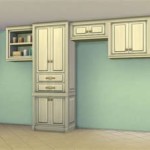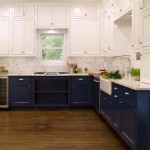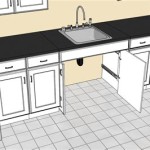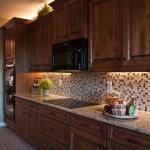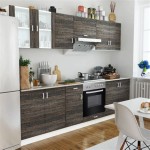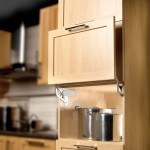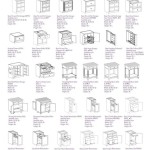How To Level Kitchen Cabinets For Granite
Installing granite countertops is a significant home improvement project, adding value and aesthetic appeal to any kitchen. However, the success of a granite installation hinges critically on the substrate: the kitchen cabinets. Uneven or improperly installed cabinets can lead to cracked granite, unsightly gaps, and overall instability. Therefore, meticulously leveling the cabinets before the granite installers arrive is an indispensable step. This article details the process of leveling kitchen cabinets to ensure a successful and long-lasting granite countertop installation.
The importance of level cabinets cannot be overstated. Granite is a heavy and rigid material, lacking the flexibility to conform to uneven surfaces. When placed on unlevel cabinets, stress points develop within the granite. Over time, these stresses can cause cracks to form, particularly around sink cutouts or areas with minimal support. Leveling the cabinets distributes the weight of the granite evenly, minimizing stress and preventing potential damage. Moreover, level cabinets ensure that the granite surface is consistent and visually appealing, free from dips or rises that would be noticeable and potentially affect the functionality of the countertop.
Before beginning the leveling process, it is crucial to gather the necessary tools and materials. The essential tools include a four-foot level (a six-foot level is preferable for longer cabinet runs), a laser level (optional, but highly recommended for accuracy), shims (wood or plastic, in various thicknesses), a stud finder, a drill with various drill bits, construction screws, a screwdriver (both Phillips head and flathead), a tape measure, a pencil, safety glasses, and gloves. Also, having a helper can significantly simplify the process, especially when dealing with larger cabinets.
Key Point 1: Preparing the Cabinets for Leveling
Before any leveling adjustments are made, the cabinets must be properly prepared. This involves verifying the structural integrity of the cabinets, ensuring they are securely attached to the wall, and removing any obstructions that might interfere with the leveling process. This stage lays the foundation for a stable and accurate countertop installation.
The first step is to inspect each cabinet for any signs of damage or weakness. Check for loose joints, warped panels, or water damage. Any structural issues must be addressed before proceeding. Loose screws should be tightened, and damaged panels should be repaired or replaced. Weakened joints may require reinforcement with wood glue and screws. Ignoring these structural flaws will compromise the stability of the cabinets and ultimately affect the longevity of the granite countertop.
Next, use a stud finder to locate the wall studs behind the cabinets. Cabinets should be securely attached to these studs using construction screws. If the cabinets are only attached to drywall, they will not be able to support the weight of the granite. Drive screws through the back of the cabinet and into the wall studs. Ensure the screws are long enough to penetrate the studs deeply, providing a strong and reliable connection. If necessary, add additional screws to ensure the cabinets are firmly anchored to the wall. Note the locations of the screw placements; these locations will be crucial for later tightening.
Examine the cabinet base and any existing leveling feet. Many cabinets come with adjustable feet that can be used to fine-tune the height. Ensure these feet are in good working order and that they are properly engaged with the floor. If the cabinets are sitting directly on the floor, check for any debris or unevenness that might be affecting their stability. Clear away any obstructions and clean the floor around the cabinets to provide a clean and level working surface.
Finally, remove any drawers or doors from the cabinets. This will make the cabinets lighter and easier to adjust. It will also prevent the drawers and doors from getting damaged during the leveling process. Store the drawers and doors in a safe place where they will not be scratched or dented. Label each drawer and door with its corresponding cabinet to ensure they are reinstalled correctly.
Key Point 2: The Leveling Procedure
With the cabinets prepared, the process of leveling can begin. Accurate leveling requires a systematic approach, starting with the highest point and working downward. Careful measurement and precise placement of shims are critical for achieving a perfectly level surface.
Begin by using the four-foot level (or six-foot level) to check the level of the cabinets across the front and along the back. Identify the highest point along the cabinet run. This point will serve as the reference point for leveling the remaining cabinets. Place the level on the top edge of the cabinet and observe the bubble. If the bubble is centered, the cabinet is level. If the bubble is off-center, note the direction and amount of the deviation.
Starting from the highest point, work your way down to the lower cabinets. Use shims to raise the lower cabinets to match the height of the highest point. Shims are thin pieces of wood or plastic that can be inserted under the cabinets to adjust their height. Insert shims under the base of the cabinet, near the front and back corners. Use the level to check the level of the cabinet after each shim is added. Continue adding shims until the cabinet is level with the highest point.
Once the cabinets are level from front to back, check the level of the cabinets from side to side. Place the level across the top edge of the cabinet and observe the bubble. If the bubble is off-center, add shims to one side of the cabinet until it is level. Ensure the shims are evenly distributed under the cabinet to provide uniform support. Avoid using a single shim in one location, as this can create a pressure point and cause the cabinet to rock. Overlapping shims is acceptable as long as the overlapping shims provide a solid base of support.
For long cabinet runs, it is helpful to use a laser level. Position the laser level at one end of the cabinet run and project a laser beam across the top edge of the cabinets. Use the laser beam as a reference point to adjust the height of the remaining cabinets. The laser level provides a visual guide that makes it easier to identify and correct any deviations in height. This technique is particularly useful for ensuring that the cabinets are level across a large distance.
Continue this process for each cabinet until all of the cabinets are level with each other. Take your time and double-check your work to ensure accuracy. A few extra minutes spent leveling the cabinets can save you hours of frustration later on. Remember to periodically check the level of the cabinets as you work to ensure that they have not shifted or settled. The placement of the shims is paramount to the stability and leveling of the cabinets.
Key Point 3: Securing and Final Adjustments
After leveling the cabinets, the shims must be securely fastened to prevent them from shifting or falling out. Any gaps between the cabinets and the wall or floor should also be filled to provide additional support. This final stage ensures the long-term stability of the cabinets and provides a solid foundation for the granite countertops.
Once the cabinets are level, securely fasten the shims in place. Use construction adhesive to glue the shims to the underside of the cabinets and to the floor. This will prevent the shims from shifting or falling out over time. Apply the adhesive liberally, ensuring that the entire surface of the shim is covered. Allow the adhesive to dry completely before proceeding.
After the adhesive has dried, you may additionally affix the shims with small finish nails or screws. This will provide an extra layer of security and prevent the shims from moving if the adhesive fails. Drive the nails or screws through the shims and into the base of the cabinet. Be careful not to drive the nails or screws too deep, as this could damage the cabinet.
Inspect the spaces between the cabinets and the wall and floor. Fill any gaps with shims or caulk. Large gaps can be filled with expanding foam insulation. This will provide additional support for the cabinets and prevent them from shifting. Be careful not to overfill the gaps, as this could cause the cabinets to bow or warp. Once the gaps are filled, trim away any excess foam or caulk with a utility knife.
Finally, re-tighten the screws that secure the cabinets to the wall studs. Ensure that the screws are firmly embedded in the studs and that the cabinets are securely attached to the wall. This will provide additional stability and prevent the cabinets from moving under the weight of the granite countertops. This tightening should be more than just a cursory check; ensure each screw is firmly connecting the cabinet to the wall studs.
Once the leveling and securing process is complete, re-install the drawers and doors that were removed earlier. Ensure that the drawers and doors fit properly and that they operate smoothly. Adjust the hinges and drawer slides as needed to ensure proper alignment. This ensures the cabinets are not only level and strong, but also fully functional upon the placement of the granite.
After the cabinets are leveled and secured, a final inspection is recommended. Use the level to check the level of the cabinets one last time. If any adjustments are needed, make them now before the granite countertops are installed. Addressing any remaining issues at this stage will prevent potential problems down the road. A thorough and meticulous approach to leveling the cabinets is essential for a successful and long-lasting granite countertop installation.
The successful installation of granite countertops is directly correlated to the care and precision taken in leveling the underlying cabinets. By following these steps, homeowners can ensure a stable, aesthetically pleasing, and durable granite surface that will enhance their kitchen for years to come.
Leveling Up Stone Countertops Jlc

How To Prepare Cabinets For Granite Countertops Right Way Rsk Marble

How To Prepare Kitchen Cabinets For Granite Stone Countertops Marble Com

Installing Countertops On Uneven Base Cabinets

How To Prepare Cabinets For Granite Countertops Right Way Rsk Marble
Leveling Up Stone Countertops Jlc
Leveling Up Stone Countertops Jlc
Leveling Up Stone Countertops Jlc

How To Install A Granite Kitchen Countertop

20 Leveling Cabinets For Granite Countertops Kitchen Counter Top Ideas Check More Colors
Related Posts

